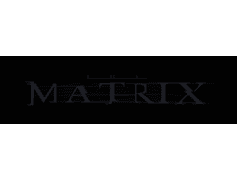
Remarks of CIA General Counsel Stephen W. Preston at Harvard Law School
Remarks by CIA General Counsel Stephen W. Preston as prepared for delivery at Harvard Law School
April 10, 2012
Thank you, Professor [Jack] Goldsmith, etc.
* * *
For those working at the confluence of law and national security, the President has made clear that ours is a nation of laws and that an abiding respect for the rule of law is one of our country’s greatest strengths, even against an enemy with only contempt for the law. This is so for the Central Intelligence Agency no less than any other instrument of national power engaged in the fight against al-Qa’ida and its militant allies or otherwise seeking to protect the United States from foreign adversaries. And that is the central point of my remarks this afternoon: Just as ours is a nation of laws, the CIA is an institution of laws and the rule of law is integral to Agency operations.
i.
Before we get to the rule of law, I want to spend a moment on the business of the CIA.
I will start off with two observations that I think are telling:
First, the number of significant national security issues facing our country may be as great today as it has ever been. Just think of what the President and his national security team confront every day: the ongoing threat of terrorist attack against the homeland and U.S. interests abroad; war in Afghanistan and, until recently, Iraq; complex relations with countries like Pakistan and India; the challenges presented by Iran and North Korea; the emergence of China and its growing economic and military power; the growing number of computer network attacks originating outside the United States; profound change in the most volatile area of the world, the greater Middle East, with new regimes in Tunisia, Egypt, and Libya, and continuing violence in Syria; the financial challenges faced by countries in the Euro zone; and the violence associated with drug trafficking in this hemisphere. And the list could go on.
Second, the national security issues facing our country today tend to be intelligence-intensive. Intelligence is fundamental to the efforts of policy-makers to come to grips with nearly all of the issues I have just listed – whether international terrorism, the proliferation of Weapons of Mass Destruction, the conduct of non-state actors and rogue states outside the community of nations, cyber security, or the rise of new powers. The nation’s leaders cannot fully understand these issues or make informed policy on these issues without first-rate intelligence.
Putting these two dynamics together – the multitude of different national security issues and the fact that intelligence is critical to almost all of them – it may be that intelligence has never been more important than it is today. At the very least, the intel business is booming.
So what does the CIA do? Our work boils down to three jobs. To quote from the National Security Act of 1947:
- Agency operators, quote, “collect intelligence through human sources and by other appropriate means.” This is also referred to as foreign intelligence collection or, at times, espionage.
- Agency analysts, quote, “correlate and evaluate intelligence related to the national security and provide appropriate dissemination of such intelligence.” This is also referred to as all-source analysis and national intelligence reporting, and it requires that the products of all intelligence disciplines be integrated.
- And the Agency performs such other functions and duties as the President may direct, which may include activities to influence conditions abroad, quote, “where it is intended that the role of the U.S. Government will not be apparent or acknowledged publicly.” In other words, covert action.
ii.
If that is, in essence, the business of the CIA, what about the rule of law? And, in particular, why do I say that the rule of law is integral to Agency operations? The answer is that all intelligence activities of the Agency must be properly authorized pursuant to, and must be conducted in accordance with, the full body of national security law that has been put in place over the six-plus decades since the creation of the CIA. And all such activities are subject to strict internal and external scrutiny. This breaks down into three propositions:
First, all intelligence activities of the Agency must be properly authorized pursuant to the law. In this respect, the constraints on the Agency exceed those on virtually any organization in the private sector. A business enterprise is free to do whatever it wants in pursuit of profit, shareholder value, or what-have-you, provided it does not violate the proscriptions of positive law. By contrast, the CIA cannot do anything without an affirmative grant of legal authority to engage in that activity. In some cases, such as foreign intelligence collection, the grant may be broad; in others, such as covert action, the grant of authority might be quite narrow and specific, and subject to numerous conditions. In any event, before any step is taken, the threshold question asked when considering a contemplated activity is, do we have the legal authority to act?
Second, all intelligence activities of the Agency must be conducted in accordance with the law. Assuming there is legal authority to act in the first place, all steps taken must comply with applicable prohibitions and limitations embodied in the United States Constitution, federal statutes, Executive Orders and other Presidential directives, and Agency regulations. To single out some of them:
The first, fourth, and fifth amendments to the Constitution, which protect the rights of American citizens and certain others.
- The National Security Act of 1947 and the Central Intelligence Agency Act of 1949, which establish the CIA, define its missions, and delineate its role within the Intelligence Community – including the so-called “law enforcement proviso,” which bars the Agency from exercising law enforcement powers or performing internal security functions.
- Executive Order 12333, Attorney General-approved guidelines and internal Agency regulations, which contain a host of restrictions on intelligence activities in general and those of the CIA in particular, including the assassination ban in Executive Order Twelve-Triple-Three. These directives include numerous provisions intended to protect privacy and civil liberties, including a prohibition against collection in the United States for the purpose of acquiring information on the domestic activities of U.S. Persons; limitations on acquisition, retention and use of information about U.S. Persons; conditions on arrangements with U.S. institutions of higher learning; and conditions on unwitting use of U.S. Persons in intelligence activities and undisclosed participation in organizations in the United States.
- And, finally, the Foreign Intelligence Surveillance Act and the FISA Amendments Act, which govern certain activities in the nature of electronic surveillance and physical searches.
Beyond all these, international law principles may be applicable, as well, and I will come back to this later.
Third, all intelligence activities of the Agency are subject to strict internal and external scrutiny.
It is true that a lot of what the CIA does is shielded from public view, and for good reason: much of what the CIA does is a secret! Secrecy is absolutely essential to a functioning intelligence service, and a functioning intelligence service is absolutely essential to national security, today no less than in the past. This is not lost on the federal judiciary. The courts have long recognized the state secrets privilege and have consistently upheld its proper invocation to protect intelligence sources and methods from disclosure. Moreover, federal judges have dismissed cases on justiciability or political question grounds, acknowledging that the courts are, at times, institutionally ill-equipped and constitutionally incapable of reviewing national security decisions committed to the President and the political branches.
While public and judicial scrutiny may be limited in some respects, it simply does not follow that Agency activities are immune from meaningful oversight. First, there is direct supervision by the National Security Council and the President, who, after all, not only is constitutionally responsible for keeping the American people safe, but also, quote, “shall take Care that the Laws be faithfully executed.” Beyond that, consider this catalog of Agency overseers:
- The intelligence oversight committees of the Senate and House of Representatives. We are bound by statute to ensure that these two committees are kept, quote, “fully and currently informed” with respect to the entire range of intelligence activities, including covert action. They are afforded visibility into Agency operations that far exceeds the usual scope of congressional oversight of federal agencies. Think about this: during the last Congress, the Agency made, on average, more than two written submissions and two live appearances per day, 365 days a year.
- The Foreign Intelligence Surveillance Court, comprised of Article III judges, provides judicial supervision with respect to certain activities in the nature of electronic surveillance and physical searches.
- The President’s Intelligence Advisory Board, an independent component of the Executive Office of the President, reviews and assesses the performance of the CIA and other elements of the Intelligence Community.
- The Intelligence Oversight Board is a committee of the President’s Intelligence Advisory Board to which the CIA reports apparent legal violations and other significant or highly sensitive matters that could impugn the integrity of the Intelligence Community.
- The Office of the Director of National Intelligence and, new within the past year, the Inspector General for the Intelligence Community.
- And the Agency’s own statutorily independent Inspector General – the only other Agency official, after the Director and the General Counsel, nominated by the President and confirmed by the Senate.
- Last, but by no means least, there is the U.S. Department of Justice, to which the CIA is required to report all possible violations of federal criminal laws by employees, agents, liaison, or anyone else.
iii.
Okay, I have described the legal regime in which CIA operates. Now I would like to illustrate how the law is applied in practice, by reference to a hypothetical case.
Suppose that the CIA is directed to engage in activities to influence conditions abroad, in which the hand of the U.S. Government is to remain hidden, – in other words covert action – and suppose that those activities may include the use of force, including lethal force. How would such a program be structured so as to ensure that it is entirely lawful? Approaches will, of course, vary depending on the circumstances – there is no single, cookie-cutter approach – but I conceive of the task in terms of a very simple matrix. First is the issue of whether there is legal authority to act in the first place. Second, there is the issue of compliance with the law in carrying out the action. For each of these issues, we would look first, and foremost, to U.S. law. But we would also look to international law principles. So envision a four-box matrix with “U.S. Law” and “International Law” across the top, and “Authority to Act” and “Compliance in Execution” down the side. With a thorough legal review directed at each of the four boxes, we would make certain that all potentially relevant law is properly considered in a systematic and comprehensive fashion.
Now, when I say “we,” I don’t mean to suggest that these judgments are confined to the Agency. To the contrary, as the authority for covert action is ultimately the President’s, and covert action programs are carried out by the Director and the Agency at and subject to the President’s direction, Agency counsel share their responsibilities with respect to any covert action with their counterparts at the National Security Council. When warranted by circumstances, we – CIA and NSC – may refer a legal issue to the Department of Justice. Or we may solicit input from our colleagues at the Office of the Director of National Intelligence, the Department of State, or the Department of Defense, as appropriate.
Getting back to my simple matrix …
(1) Let’s start with the first box: Authority to Act under U.S. Law.
First, we would confirm that the contemplated activity is authorized by the President in the exercise of his powers under Article II of the U.S. Constitution, for example, the President’s responsibility as Chief Executive and Commander-in-Chief to protect the country from an imminent threat of violent attack. This would not be just a one-time check for legal authority at the outset. Our hypothetical program would be engineered so as to ensure that, through careful review and senior-level decision-making, each individual action is linked to the imminent threat justification.
A specific congressional authorization might also provide an independent basis for the use of force under U.S. law.
In addition, we would make sure that the contemplated activity is authorized by the President in accordance with the covert action procedures of the National Security Act of 1947, such that Congress is properly notified by means of a Presidential Finding.
(2) Next we look at Authority to Act with reference to International Law Principles.
Here we need look no further than the inherent right of national self-defense, which is recognized by customary international law and, specifically, in Article 51 of the United Nations Charter. Where, for example, the United States has already been attacked, and its adversary has repeatedly sought to attack since then and is actively plotting to attack again, then the United States is entitled as a matter of national self-defense to use force to disrupt and prevent future attacks.
The existence of an armed conflict might also provide an additional justification for the use of force under international law.
(3) Let’s move on to Compliance in Execution under U.S. Law.
First, we would make sure all actions taken comply with the terms dictated by the President in the applicable Finding, which would likely contain specific limitations and conditions governing the use of force. We would also make sure all actions taken comply with any applicable Executive Order provisions, such as the prohibition against assassination in Twelve-Triple-Three. Beyond Presidential directives, the National Security Act of 1947 provides, quote, “[a] Finding may not authorize any action that would violate the Constitution or any statute of the United States.” This crucial provision would be strictly applied in carrying out our hypothetical program.
In addition, the Agency would have to discharge its obligation under the congressional notification provisions of the National Security Act to keep the intelligence oversight committees of Congress “fully and currently informed” of its activities. Picture a system of notifications and briefings – some verbal, others written; some periodic, others event-specific; some at a staff level, others for members.
(4) That leaves Compliance in Execution with reference to International Law Principles.
Here, the Agency would implement its authorities in a manner consistent with the four basic principles in the law of armed conflict governing the use of force: Necessity, Distinction, Proportionality, and Humanity. Great care would be taken in the planning and execution of actions to satisfy these four principles and, in the process, to minimize civilian casualties.
So there you have it: four boxes, each carefully considered with reference to the contemplated activity. That is how an Agency program involving the use of lethal force would be structured so as to ensure that it satisfies applicable U.S. and international law.
iv.
Switching gears, let us consider a real world case in point: the operation against Usama bin Laden in Abbottabad, Pakistan, on May 2nd [local time]. My purpose is not to illustrate our hypothetical program, but to show that the rule of law reaches the most sensitive activities in which the Agency is engaged.
The bin Laden operation was, of course, a critically important event in the fight against al-Qa’ida. Much has been said and written about the operation in this regard, and I won’t dwell on it now. Rather, I want to focus on the legal aspect of the operation. But if you will indulge me, there are a few other aspects of this historic event that warrant mention up front.
First, finding bin Laden was truly a triumph of intelligence. It’s a long story – too long to tell here – but it begins nine years earlier, with the nom de guerre of an al-Qa’ida courier. Through painstaking collection and analysis over several years, the Agency and its partners in the Intelligence Community determined his true name. Finding the courier and then his residence in Abbottabad took another year of hard work. Instead of a small house from which the Agency hoped to follow him to bin Laden, the Abbottabad compound suggested immediately the possibility that bin Laden was living there. Extraordinarily high walls, barbed wire, no telephone or internet service, trash burned instead of put out for collection like everybody else’s, children not going to school. Then we learned that an additional family matching the expected profile of bin Laden’s family in flight was living at the compound, never left it, and was unknown to the neighbors. And we learned that the courier was, nine years later, still working for al-Qa’ida. It all added up – the only conclusion that made sense of it all was that bin Laden was there. But there was no positive ID.
Which leads to the next point: This was also an example of difficult and momentous Presidential decision-making. There was strong circumstantial evidence that bin Laden was there, but not one iota of direct evidence. No eyes-on identification. And the risks and potential consequences of conducting an operation deep inside Pakistan were enormous, particularly if the operation failed. The President made a sound decision and, in my mind, a gutsy decision.
And, finally, the operation itself was a great triumph for our military. More dramatic than any work of fiction: the tension at the outset, the sickening feeling when one of the helos went down, the seeming eternity waiting to find out if the objective was achieved, and the relief when the last helo lifted off with the force unharmed. My hat’s off to these Special Unit operators – incredibly professional. When the helo went down, they didn’t skip a beat. They had trained for all contingencies and slipped right into Plan B. Then there’s the guy first in the room with bin Laden. Charged by two young women. Trained to expect suicide bombers in these circumstances. He grabbed them, shoved them into a corner and threw himself on top of them, shielding them from the shooting and shielding the guys behind him from the blast if they detonated. His quick thinking, and raw bravery, saved two lives that did not have to end that night.
I am sure the role of the lawyers is not the first thought to come to mind when you think of the bin Laden operation. Admittedly, it may not be the most fascinating aspect, but it is illustrative of the careful attention to the law brought to bear on our country’s most sensitive counterterrorism operations.
Because of the paramount importance of keeping the possibility that bin Laden had been located a secret and then of maintaining operational security as the Abbottabad raid was being planned, there were initially very few people in under the tent. So I cannot say the operation was heavily lawyered, but I can tell you it was thoroughly lawyered. From a legal perspective, this was like other counterterrorism operations in some respects. In other respects, of course, it was extraordinary. What counsel concentrated on were the law-related issues that the decision-makers would have to decide, legal issues of which the decision-makers needed to be aware, and lesser issues that needed to be resolved. By the time the force was launched, the U.S. Government had determined with confidence that there was clear and ample authority for the use of force, including lethal force, under U.S. and international law and that the operation would be conducted in complete accordance with applicable U.S. and international legal restrictions and principles.
As a result, the operation against bin Laden was not only militarily successful and strategically important, but also fully consistent with all applicable law.
* * *
When I talk about CIA and the rule of law, I speak of the business of the Agency and sometimes draw an analogy between the Agency and a regulated business – a rule-bound and closely watched business at that. But I have to admit that the analogy is seriously flawed in at least one respect: the CIA is not a business enterprise. It is, of course, a secret intelligence service charged with protecting the United States against foreign adversaries. It operates at the very tip of the spear in the fight against al-Qa’ida and its affiliates and adherents. The work of the CIA is not measured in dollars. Too often the measure is taken in lives lost – like the seven officers killed a little more than two years ago at a forward operating base in eastern Afghanistan and others whose stars consecrate our Memorial Wall. But the measure is also taken in lives saved, which are countless. As I stand before you, I am deeply grateful for what the good men and women who are the CIA do every day – literally, the sacrifices they make – to keep you and me, and our families, safe and secure. All of us should be.
Thank you very much.
Posted: Apr 20, 2012 02:39 PM
Last Updated: May 02, 2012 10:31 AM










































































































No comments:
Post a Comment